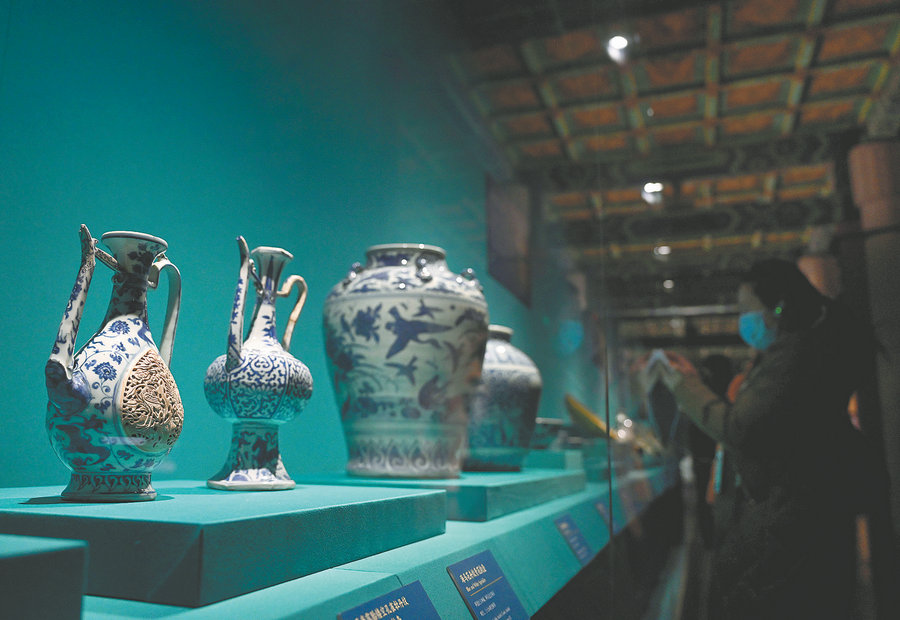

An exhibition at the Palace Museum demonstrates how civilizations advanced together, Wang Kaihao reports.
Blue-and-white porcelain is probably a good example of the global market in the ancient world. This Chinese ceramic variety gained a global reputation during the Yuan Dynasty (1271-1368) and over the following centuries, became one of the country's signature products on the flourishing Maritime Silk Road.
Orders from overseas poured into Chinese kilns, and many countries along the trade routes also made their own variants.
Nonetheless, when people look back at how this saga began, they may discover an interesting fact — this "made-in-China "product was also an example of the international supply chain in the past, as the raw cobalt pigment initially used to make its amazing blue came from modern-day Iran.
This is just one of the stories told through the 266 cultural artifacts on display at Historic Encounters: Interaction Between China and West Asia in History, an ongoing exhibition running through April 11 in the central hall of the Meridian Gate Galleries in Beijing's Palace Museum, also known as the Forbidden City.
"In the blue-and-white porcelain on exhibit, you'll find many typical West Asian decorative patterns and inscriptions," Ji Luoyuan, the exhibition's curator and an associate researcher with the Palace Museum, says.
"But China gradually developed its own materials during the Ming Dynasty (1368-1644) and adopted more traditional Chinese patterns," he adds. "The craftsmanship and aesthetics of blue-and-white porcelain then became more localized. Chinese civilization has always been inclusive and creative."